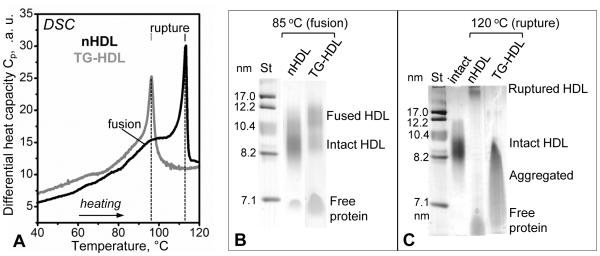Figure 3.
Effect of TG enrichment on thermal remodeling of plasma HDL. (A) Differential heat capacity, Cp(T), recorded by differential scanning calorimetry during heating of nHDL and TG-HDL at a constant rate of 90 °C/h. Endothermic transitions corresponding to the thermodynamically irreversible lipoprotein fusion and rupture are indicated [42]. Native PAGE shows population distribution in nHDL and TG-HDL after heating to 85 °C (B) or to 120 °C (C) to trigger fusion and rupture, respectively. HDL rupture releases core lipids that coalesce into protein-containing lipid droplets and their aggregates [42]. These large species can be seen at the top of the gel (nHDL heated to 120°C, panel C) and ultimately become too large to enter the gel (TG-HDL heated to 120 °C, panel C). Advanced lipoprotein disintegration in TG-HDL after heating to 120 °C leads to massive aggregation of free protein (panel C).

